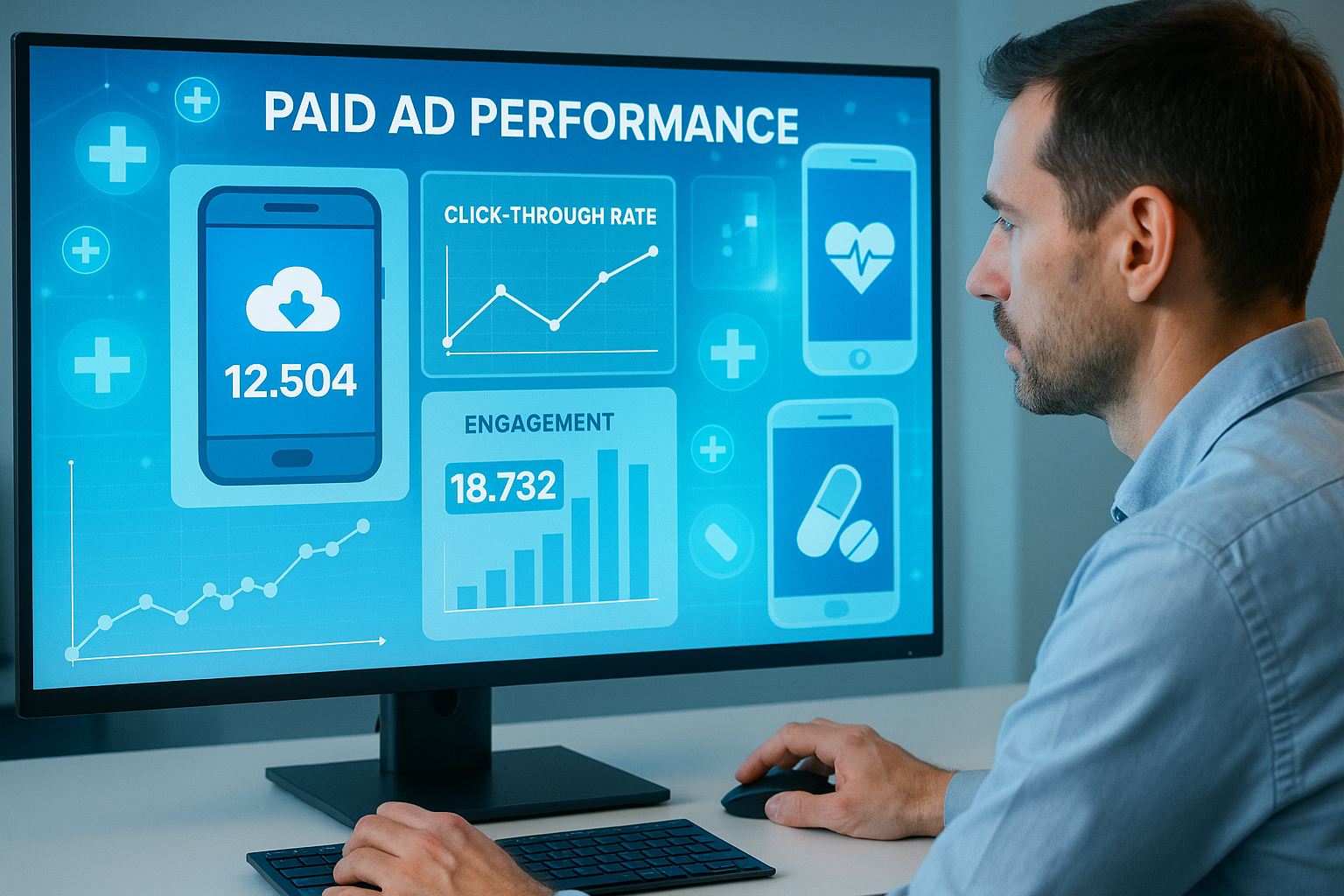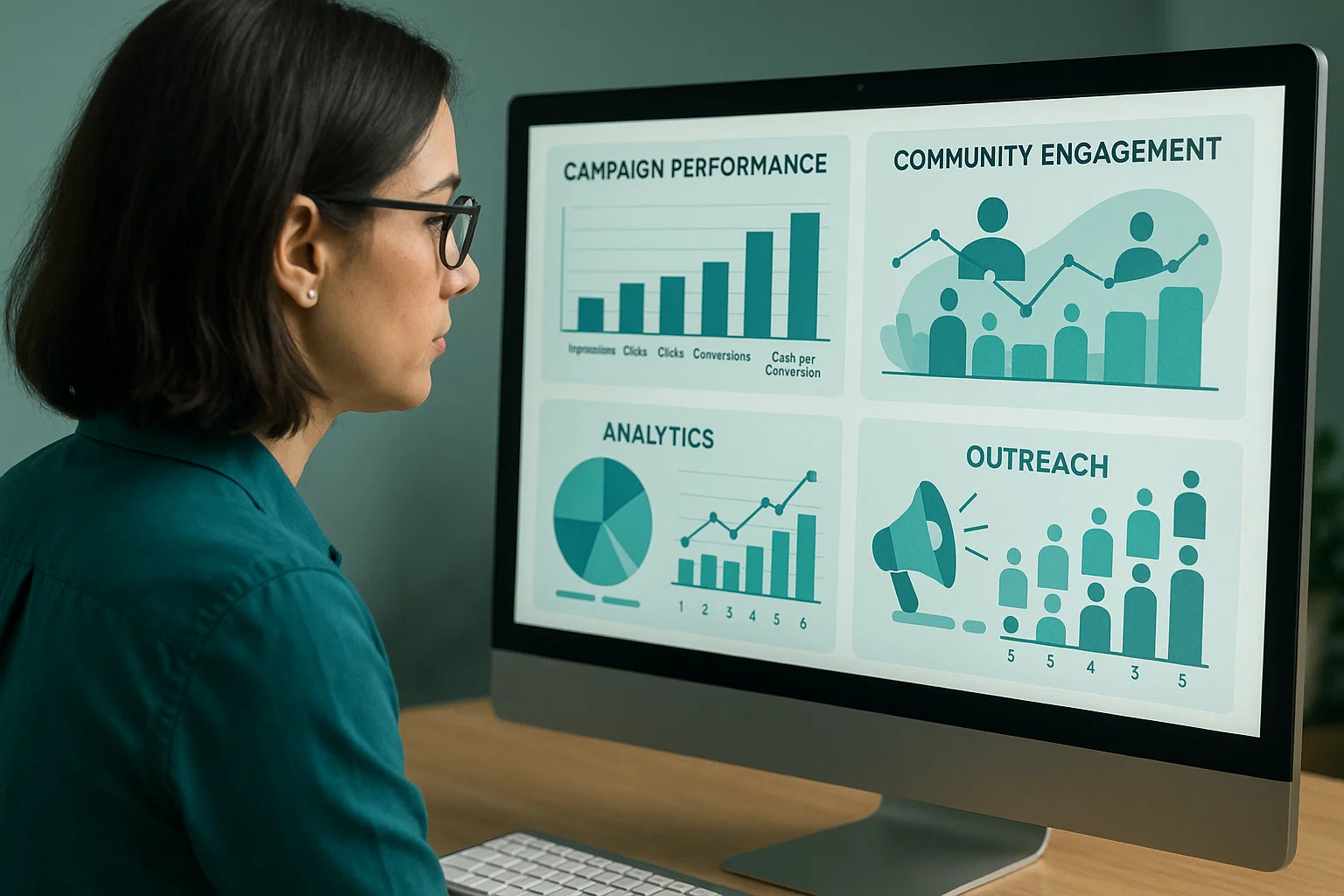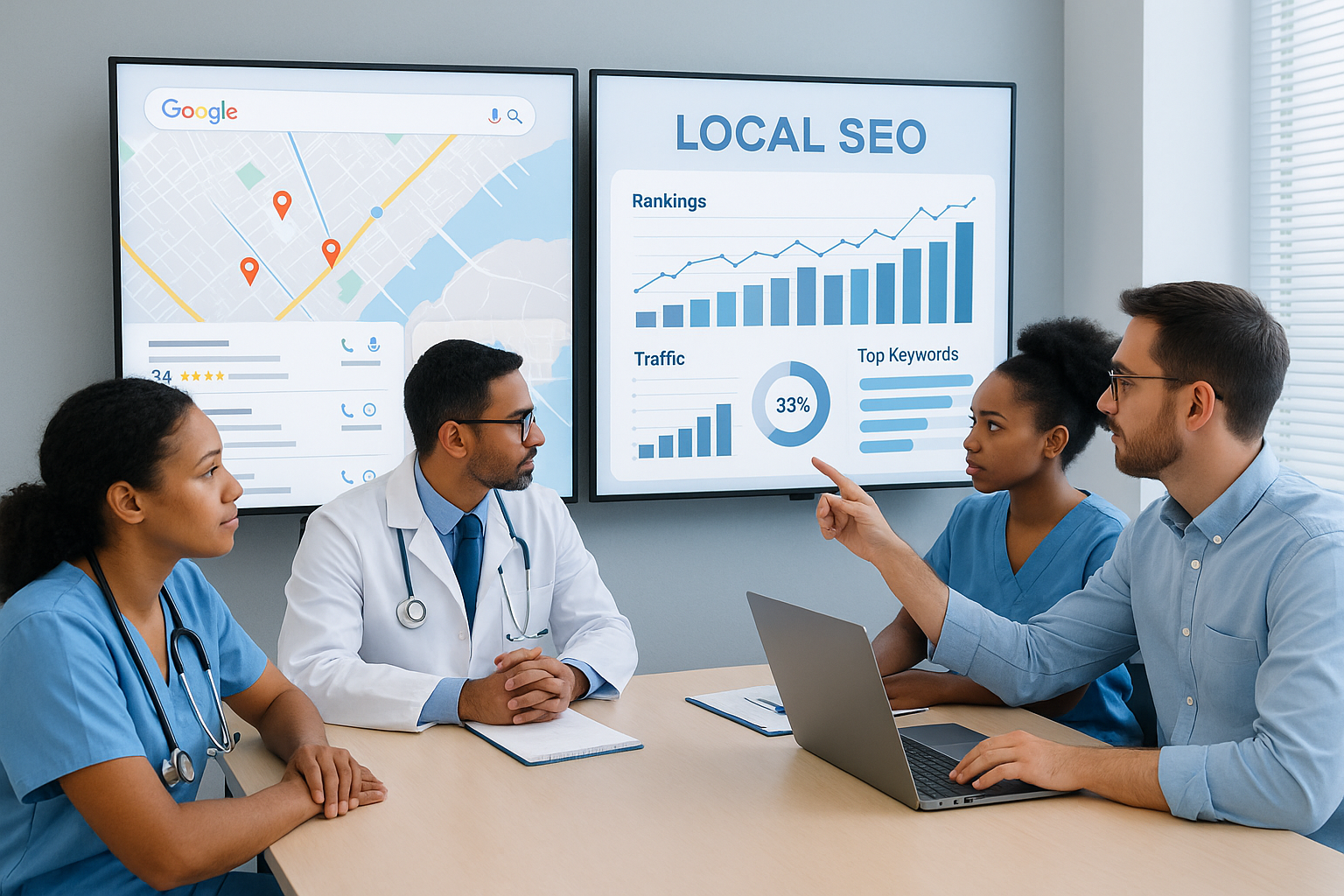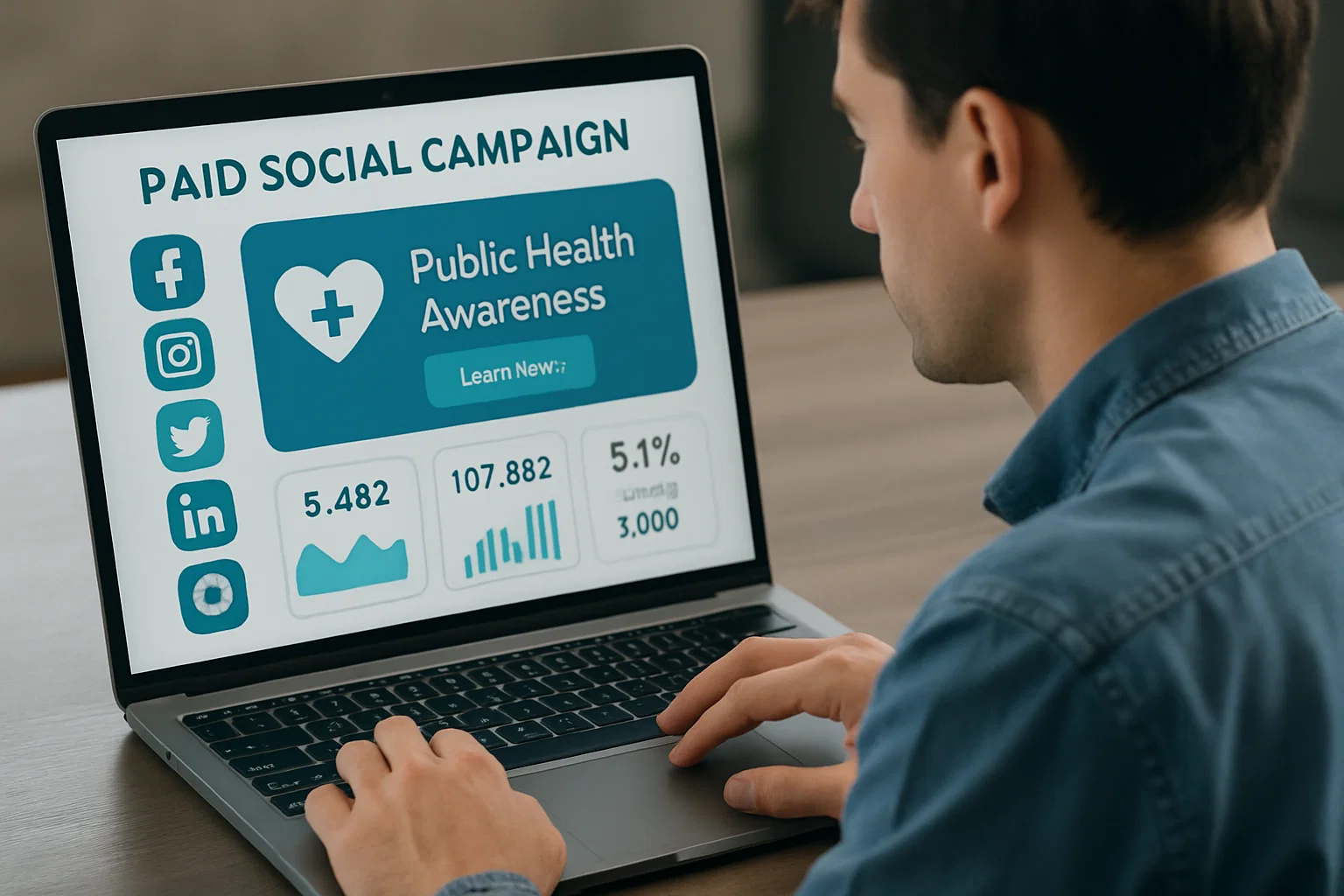Your digital health app has been in development for two years. The technology works flawlessly. Clinical validation is solid. User experience testing yielded outstanding results. You’ve built something genuinely valuable that could improve thousands—or millions—of lives. There’s just one problem: nobody knows it exists.
You’ve optimized your App Store presence. You’ve published educational blog content. You’ve engaged on social media. Yet month after month, organic growth remains frustratingly slow. New user acquisition trickles in at a pace that won’t sustain your business or justify your investors’ confidence. You need growth—and you need it now.
This is where paid advertising transforms from nice-to-have to business-critical. Paid advertising remains an essential tool for quickly acquiring users, especially during the early stages of app promotion. While organic strategies build long-term sustainable growth, paid ads provide the immediate visibility and scalable user acquisition that digital health apps need to gain traction, prove market fit, and reach the critical mass where network effects and word-of-mouth take over.
But healthcare isn’t like e-commerce or gaming. You can’t just throw money at Facebook ads and watch installs pour in. Digital health apps face unique challenges: complex value propositions, privacy concerns, regulatory constraints, longer consideration cycles, and multiple stakeholders in purchase decisions. Success requires sophisticated strategy that balances aggressive growth with healthcare-specific nuances.
This comprehensive guide explores how paid advertising can drive explosive user growth for digital health apps—the platforms that work, the strategies that convert, the metrics that matter, and the pitfalls to avoid in one of the most promising yet challenging app categories.
The Digital Health App User Acquisition Landscape in 2025
Understanding the current state of digital health app marketing is essential for developing effective paid advertising strategies.
Market Size and Growth Trajectory
The opportunity is massive and accelerating. Demand for healthcare apps surged in recent years, with an average of nearly 1 million downloads per day in 2023, a 42% increase versus 2019. By 2032, the mHealth market will surpass $20 billion, reflecting sustained investment and adoption.
This growth creates both opportunity and intense competition. However, by 2025, the mobile app market will have become so saturated that every installation will require significant effort. With over 5 million apps on the App Store and Google Play competing for audience attention, relying solely on technology or a good idea is no longer enough.
In 2025 healthcare players have increased their marketing budgets by up to 7% of their annual revenue, signaling that sophisticated organizations recognize paid acquisition’s critical role in capturing market share.
The Saturation Challenge
App discoverability in the app stores is dead. Organic discovery through browsing app stores has become virtually impossible except for the most established apps. Success now requires a comprehensive strategy that combines organic promotion with paid channels.
Average growth rate of 76.6% demonstrates significant opportunity in the mobile app market. Strategic ad campaigns can rapidly scale user acquisition for those that can afford it. The winners in this environment aren’t necessarily those with the best apps—they’re those with the best apps AND the most effective paid acquisition strategies.
The Shift from Facebook Dominance
For years, Facebook (Meta) dominated mobile app user acquisition. Thanks to the number of data points Meta has been collecting for several billion of its users, Facebook Ads was, and to a lesser degree is, in a great position to provide app marketers with a platform to connect their apps with relevant mobile app users.
This shift forced advertisers to diversify. Google holds 62.3% market share. Concentrated monopolization of ad networks hurts app developers. Diversifying beyond Google Ads reduces platform risk and increases audience reach.
The modern digital health app marketer must master multiple platforms, not rely on any single channel.
Core Paid Advertising Platforms for Digital Health Apps
Each major platform offers distinct advantages for digital health app user acquisition. Understanding their strengths and optimal use cases enables strategic allocation of ad budgets.
Apple Search Ads: Capturing High-Intent Users
Apple Search Ads: Perfect for reaching users ready to install an app immediately. When someone searches the App Store for “blood pressure tracker” or “meditation app,” they’ve already decided they want that type of solution—they’re just choosing which one to download.
Why Apple Search Ads Work for Digital Health:
High Intent: Searchers are actively looking for solutions, making them the warmest possible prospects.
Immediate Context: Ads appear directly in the App Store where conversion happens, eliminating steps between impression and install.
Lower Competition: Many advertisers overlook Apple Search Ads, focusing on Google and social platforms, creating opportunity for those who prioritize it.
iOS User Value: iOS users typically have higher lifetime value than Android users, justifying potentially higher acquisition costs.
Privacy Compliance: Apple Search Ads respect iOS privacy standards, avoiding the targeting degradation that affected other platforms.
Best Practices for Apple Search Ads:
- Target both branded keywords (your app name, protecting against competitors) and category keywords (generic terms like “mental health app”)
- Use Search Match to let Apple’s algorithm discover relevant keywords you might miss
- Monitor Search Popularity Scores to identify high-traffic keywords
- Create compelling custom product pages that speak to specific user segments
- Set appropriate bids based on keyword competitiveness and user value
- Track post-install engagement, not just installs, to optimize for quality users
Google App Campaigns: AI-Powered Optimization
Google App Campaigns: Utilizing machine learning to optimize ad placements and maximize efficiency. Google’s automated campaign type distributes ads across Search, Google Play, YouTube, and the Display Network, using machine learning to find your best users.
Advantages for Digital Health Apps:
Massive Reach: Access Google’s entire ecosystem with a single campaign.
Machine Learning Optimization: Google’s algorithms learn which placements, audiences, and creatives drive your most valuable users.
YouTube Integration: Video content works exceptionally well for explaining digital health solutions.
Android Dominance: Critical for reaching Android users who represent the majority of global smartphone users.
Best Practices for Google App Campaigns:
- Provide diverse creative assets (text, images, videos) and let Google test combinations
- Set clear campaign objectives (installs, in-app actions, or value)
- Allow adequate learning period (2-3 weeks) before major optimizations
- Use tROAS (target return on ad spend) bidding once you have sufficient conversion data
- Create separate campaigns for different user segments or value propositions
- Leverage audience signals to guide initial machine learning
Facebook & Instagram: Social Discovery and Targeting
Despite privacy changes, Meta’s platforms remain powerful for digital health app acquisition, particularly for solutions targeting specific demographics or health conditions.
Strengths for Digital Health:
Detailed Targeting: Target by demographics, interests, behaviors, and life events (new parents, engagement, relocation).
Visual Storytelling: Instagram especially excels at showing rather than telling how apps improve lives.
Lookalike Audiences: Find new users similar to your best existing users.
Conversion Optimization: Meta’s algorithm optimizes for post-install events, not just installs.
Best Practices for Meta Advertising:
- Use video creative showing actual app functionality and benefits
- Test multiple ad formats (Stories, Feed, Reels, Collections)
- Create custom audiences from website visitors, app users, or email lists
- Build lookalike audiences from your highest-value users
- Set up proper event tracking for post-install actions
- Test different audience sizes and expansion settings
67% of healthcare marketers rely on Facebook Ads, reflecting its continued importance despite changes.
TikTok: Engaging Younger Demographics
TikTok Ads: Ideal for engaging younger audiences through creative and native video content. If your digital health app targets millennials, Gen Z, or parents, TikTok offers unmatched engagement.
Why TikTok Works:
Young User Base: Dominates younger demographics often underserved by traditional healthcare.
Organic Feel: Best-performing ads don’t look like ads—they look like native TikTok content.
High Engagement: TikTok users are highly engaged, spending significant time in-app daily.
Trending Content: Ability to leverage trending sounds, challenges, and formats creates virality potential.
Best Practices for TikTok:
- Create content that feels native to the platform, not polished corporate advertising
- Use trending sounds and participate in relevant challenges
- Show real people using and benefiting from your app
- Keep videos short (15-30 seconds) and punchy
- Test Spark Ads (promoting organic content) versus standard ads
- Leverage TikTok’s Automated Creative Optimization
Programmatic Display Networks
Networks like AppLovin, AdColony, ironSource, and Unity offer programmatic access to millions of apps where your ads can appear.
When Programmatic Makes Sense:
Scale: Once you’ve maxed out platform-specific channels, programmatic provides additional reach.
Retargeting: Show ads to users who visited your website or engaged with previous ads.
Cost Efficiency: Often lower CPIs than premium platforms for less competitive verticals.
Testing: Quickly test creatives across massive inventory.
Best Practices:
- Start with managed service providers who understand healthcare app acquisition
- Monitor quality closely—programmatic can deliver low-quality installs if not managed well
- Use fraud detection tools to avoid wasted spend on bot installs
- Segment placements and optimize toward those driving engaged users
- Set frequency caps to avoid oversaturation
Understanding User Acquisition Costs and ROI
Success in paid advertising requires understanding what you can afford to spend and what results to expect.
Cost Per Install Benchmarks
These are general mobile app benchmarks. Digital health apps often see higher CPIs due to:
- More educated, affluent target audiences
- Complex value propositions requiring multiple touchpoints
- Privacy-conscious users skeptical of health data collection
- Competitive bidding from well-funded companies
Healthcare-Specific Acquisition Costs
Healthcare organizations spend about $51,000 a month on paid search advertising. Top healthcare players achieve CPL of $30.
For digital health apps specifically, expect:
- Free apps with in-app purchases: $3-8 CPI
- Subscription-based wellness apps: $5-15 CPI
- Medical-grade apps requiring prescription: $10-30 CPI
- B2B apps sold to healthcare organizations: $50-150 per lead
The LTV:CAC Ratio Framework
The lower your customer acquisition cost than a patient’s lifetime value, the better. On average, a patient brings about $10,000-$20,000 to a healthcare organization over their lifetime.
For sustainable growth, your LTV:CAC ratio should be at least 3:1. This means if your CAC is $10, your average user should generate at least $30 in lifetime value.
Calculating LTV for Digital Health Apps:
LTV = (Average Revenue Per User) × (Average User Lifespan) × (Gross Margin)
Example for a meditation app:
- $9.99/month subscription
- Average subscription length: 8 months
- Gross margin: 80% (after app store fees and server costs)
- LTV = $9.99 × 8 × 0.80 = $63.92
If your CAC is $21.31, your LTV:CAC ratio is 3:1—healthy and sustainable.
The Privacy Impact on Attribution
This means your measured CAC is likely understated—some installs that came from ads won’t be properly attributed. Factor this into planning by:
- Assuming 20-30% of conversions are untracked
- Using multi-touch attribution models when possible
- Implementing incrementality testing
- Tracking long-term cohort performance, not just immediate ROI
Creative Strategy: What Works for Digital Health App Ads
Video Creative Best Practices
Show, Don’t Tell: Demonstrate your app’s functionality through screen recordings, not just talking heads or abstract imagery.
Hook Within 3 Seconds: The first three seconds determine whether users keep watching. Start with a compelling question, surprising statement, or visual that creates curiosity.
Focus on Benefits, Not Features: Users don’t care about “AI-powered personalization”—they care about “workouts that actually fit your schedule and fitness level.”
Use Real People: Authentic testimonials or demonstrations from actual users (with proper authorization) build more trust than actors or animation.
Clear Call-to-Action: Tell viewers exactly what to do next: “Download free,” “Try 7 days free,” “Start your health journey.”
Mobile-First Design: Assume videos will be watched on smartphones with sound off. Use subtitles and make key information visible without audio.
Multiple Lengths: Create 15-second, 30-second, and 60-second versions for different placements and platforms.
Static Image & Carousel Ads
When video isn’t feasible or for testing purposes, static creative can still perform:
Before/After Formats: Show transformation (weight loss, fitness progress, mood improvement) with proper authorization and disclaimers.
Problem/Solution Structure: Lead with the pain point your app solves, follow with your solution.
Social Proof: Feature star ratings, download numbers, or testimonials prominently.
App Screenshots: Show actual interface, not generic health imagery. Let people see what they’re getting.
Benefit-Focused Copy: Headlines should promise specific outcomes: “Sleep better in 21 days,” “Reduce stress in 10 minutes.”
Contextual Targeting and Integration
For digital health apps, this means:
- Running fitness app ads in sports and wellness content environments
- Promoting mental health apps in lifestyle and self-improvement contexts
- Advertising women’s health apps on parenting and family sites
- Matching creative style to placement environment
Measuring Success: Key Metrics and Analytics
Most healthcare marketers concentrate on KPIs that reflect lead generation, appointment bookings and revenue expansion. For digital health apps, success metrics extend beyond installs to include engagement, retention, and monetization.
Install Metrics
Install Volume: Total number of app installs generated.
Cost Per Install (CPI): Total ad spend divided by installs. Your most basic efficiency metric.
Install Rate: Clicks that convert to installs. Low rates suggest creative/messaging misalignment or technical issues.
Engagement Metrics
Activation Rate: Percentage of installs that complete key onboarding steps. Critical for understanding whether you’re acquiring the right users.
Day 1, 7, and 30 Retention: What percentage of users return after 1 day, 7 days, and 30 days? Higher retention indicates better product-market fit and user acquisition quality.
Session Length and Frequency: How long do users spend in-app and how often do they return? These indicate engagement depth.
Feature Adoption: What percentage of users engage with core features? Helps identify whether users understand value proposition.
Monetization Metrics
Conversion to Paid: For freemium apps, what percentage of free users convert to paid subscriptions or make in-app purchases?
Average Revenue Per User (ARPU): Total revenue divided by total users. Helps calculate LTV.
Subscription Retention: For subscription apps, how many users remain subscribed after 1, 3, 6, and 12 months?
Return on Ad Spend (ROAS): Revenue generated divided by ad spend. Directly shows profitability.
Advanced Attribution
Multi-Touch Attribution: Credit multiple touchpoints that contributed to conversion rather than only the last click.
Cohort Analysis: Track specific user groups over time to understand how acquisition quality changes.
Incrementality Testing: Measure whether ads actually caused installs or whether users would have found you anyway.
Synergies Between Paid and Organic Growth
How Paid Ads Amplify Organic Growth
Keyword Ranking Boost: Increased install velocity from paid campaigns signals app store algorithms that your app is popular, improving organic search rankings.
Review Generation: More users mean more reviews (when you request them strategically), and review quantity/quality directly impact conversion rates.
Social Proof: Higher download numbers displayed in app stores create social validation that encourages organic installs.
Brand Awareness: Paid ads build familiarity so when users encounter your app organically, they’re more likely to recognize and trust it.
Testing Insights: Paid campaigns reveal which messages, value props, and audiences respond best—insights that inform organic ASO and content strategy.
The Balanced Portfolio Approach
Striking a balance between organic and paid acquisition methods is essential for profitability.
Optimal allocation varies by app maturity:
Launch Phase (Months 1-6): 70-80% paid, 20-30% organic. Use paid to generate initial traction while building organic foundation.
Growth Phase (Months 7-18): 50-50 split. Paid continues driving volume while organic gains momentum from accumulated reviews and rankings.
Maturity Phase (18+ months): 30-40% paid, 60-70% organic. Established apps benefit from brand recognition and organic discovery, using paid strategically for specific campaigns or new feature launches.
Common Pitfalls and How to Avoid Them
Optimizing for Installs Instead of Value
Customers will want to see evidence of either clinical or economic value before buying. Don’t just chase the lowest CPI—optimize for users who actually engage with and derive value from your app.
Solution: Set up deep event tracking for post-install actions. Optimize campaigns for these events (subscriptions, feature use, milestones) rather than just installs. Pay more for better users.
Ignoring Creative Fatigue
Ad performance degrades over time as audiences see the same creatives repeatedly. This “creative fatigue” kills campaign performance.
Solution: Develop a creative production pipeline that continuously tests new concepts. Refresh creative monthly, retiring underperformers and scaling winners. Use dynamic creative optimization when available.
Insufficient Budget for Learning
Algorithms need data to optimize. Insufficient spend means campaigns never escape the learning phase.
Solution: Allocate minimum viable budgets for testing: $1,000-2,000 per platform per month minimum for meaningful learnings. Concentrate budget rather than spreading thin across many platforms.
Poor Onboarding Experience
You pay to acquire users, but if onboarding is confusing or friction-filled, they abandon immediately.
Solution: Obsess over first-time user experience. Reduce steps to value. Clearly explain benefits. Request only essential permissions initially. A/B test onboarding flows continually.
Neglecting HIPAA and Privacy Compliance
Solution: Ensure all pixel tracking, data collection, and remarketing comply with HIPAA (if applicable) and privacy regulations. Work with legal counsel to audit practices. Never advertise using protected health information.
The Future of Paid Acquisition for Digital Health Apps
AI-Driven Personalization
Machine learning will increasingly personalize ad creative and messaging for individual users, showing the exact benefits most likely to resonate based on hundreds of data points.
Retail Media Networks
See how your competitors are investing in retail media networks. Amazon, Walmart, and pharmacy chains are building advertising platforms where health-conscious consumers can be reached at purchase moments.
Privacy-First Attribution
New attribution methods that respect user privacy while still providing marketers with actionable insights will emerge as cookies and device IDs become obsolete.
Connected TV Advertising
As streaming services grow and traditional TV declines, CTV advertising offers premium inventory at scale for digital health apps, particularly those targeting older demographics.
Conclusion: Paid Ads as Growth Engine
Paid advertising isn’t a magic solution that replaces product quality, user experience, or organic growth strategies. But it is the accelerant that transforms slow organic growth into hockey-stick trajectories.
That has all changed – and I rarely see direct-to-consumer health companies rely so heavily on paid marketing without investing in other channels. The most successful digital health apps use paid advertising strategically as one component of comprehensive growth strategies, not as a silver bullet.
The key is approaching paid acquisition with sophistication: understanding platform nuances, optimizing for true user value rather than vanity metrics, creating compelling creative that resonates with health-conscious audiences, measuring what matters, and continuously testing and refining based on data.
The digital health apps that will dominate their categories in coming years won’t necessarily be those with the best technology—though technology matters enormously. They’ll be apps with great technology AND great growth strategies, using paid advertising to reach critical mass where network effects, word-of-mouth, and organic discovery create self-sustaining growth.
Your app has the potential to improve lives at scale. Paid advertising is the tool that bridges the gap between potential and reality, connecting your innovation with the people who need it most. Use it wisely, measure it rigorously, and optimize it relentlessly—and watch your user base transform from hundreds to thousands to millions.
Ready to scale your digital health app through strategic paid advertising? Our team specializes in user acquisition for healthcare apps, combining deep platform expertise with healthcare industry knowledge. From campaign strategy and creative development to advanced attribution and optimization, we drive sustainable, profitable user growth while maintaining compliance. Contact us today for a free app growth audit and discover how paid advertising can accelerate your path to market leadership.
References
- ASOMobile. (2025). “User Acquisition in 2025: What Strategies Will Lead to App Success?” Retrieved from https://asomobile.net/en/blog/user-acquisition-in-2025-what-strategies-will-lead-to-app-success/
- AppGoblin. (2025). “User Acquisition Report – September 2025.” Retrieved from https://appgoblin.info/reports/ad-user-acquisition-2025-september
- Business of Apps. (2025). “User Acquisition Strategies (2025).” Retrieved from https://www.businessofapps.com/marketplace/user-acquisition/research/user-acquisition-strategies/
- Sensor Tower. “The Rise of Healthcare Apps: A New Era in Digital Health.” Retrieved from https://sensortower.com/blog/the-rise-of-healthcare-apps-a-new-era-in-digital-health
- Promodo. (2024). “Healthcare Digital Marketing Benchmarks 2025.” Retrieved from https://www.promodo.com/blog/healthcare-digital-marketing-benchmarks-2024
- Business of Apps. (2025). “App User Acquisition Costs (2025).” Retrieved from https://www.businessofapps.com/marketplace/user-acquisition/research/user-acquisition-costs/
- Second Opinion. (2025). “How the Smart Digital Health Marketers Are Thinking About Patient Acquisition.” Retrieved from https://secondopinion.media/p/how-the-smart-digital-health-marketers-are-thinking-about-patient-acquisition
- Digital Silk. (2025). “15 Healthcare Marketing Strategies For 2025 ROI.” Retrieved from https://www.digitalsilk.com/digital-trends/healthcare-marketing-strategies/
- Business of Apps. (2024). “User Acquisition in 2025.” Retrieved from https://www.businessofapps.com/video/user-acquisition-in-2025/
- Omnisend. (2025). “Digital Marketing for Healthcare: 6 Best Strategies for 2025.” Retrieved from https://www.omnisend.com/blog/healthcare-digital-marketing/
- WebMD Ignite. “6 Must-Know Healthcare Marketing Metrics to Prove ROI.” Retrieved from https://webmdignite.com/blog/6-must-know-healthcare-marketing-metrics-prove-roi
- Patient Care Marketing Pros. (2024). “Effective Metrics for Healthcare Marketing ROI Success.” Retrieved from https://patientcaremarketingpros.com/articles/effective-metrics-for-healthcare-marketing-roi-success/
- PatientGain. (2025). “Medical Marketing ROI Calculator Example.” Retrieved from https://www.patientgain.com/medical-marketing-roi
- TBH Creative. (2025). “Healthcare Marketing ROI: Use These 3 Marketing Metrics to Improve Your Strategy.” Retrieved from https://blog.tbhcreative.com/healthcare-marketing-roi/
- WordStream. (2025). “Healthcare Advertising Benchmarks for Search, Display, & Social.” Retrieved from https://www.wordstream.com/blog/ws/2021/11/24/healthcare-advertising-benchmarks-2021
- ZealousWeb. (2025). “5 Must-Track Marketing Metrics for Healthcare Practices in 2025.” Retrieved from https://www.zealousweb.com/blog/must-track-healthcare-marketing-metrics-2025/
- Madavi Agency. (2024). “Measuring Healthcare Marketing ROI: 5 Key Considerations.” Retrieved from https://madavi.co/measuring-healthcare-marketing-roi-5-key-considerations/
- SocialClimb. (2025). “5 Essential Healthcare Marketing Metrics to Track for Measurable Success.” Retrieved from https://socialclimb.com/blog/5-essential-healthcare-marketing-metrics-to-track-for-measurable-success/
- ZS. “Commercializing Digital Health Solutions and Strategies.” Retrieved from https://www.zs.com/insights/commercializing-digital-solutions-the-struggle-is-real
- Pharmaceutical Executive. (2024). “The Importance of Responsible and Transparent Communications in Pharma Marketing.” Retrieved from https://www.pharmexec.com/view/importance-responsible-transparent-communications-pharma-marketing




